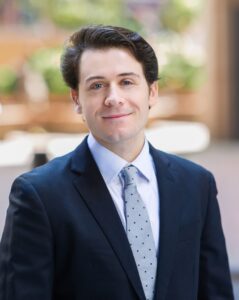s we are all currently witnessing with the rise of generative artificial intelligence and its effects on traditional media, the advent of novel technology causes ripples throughout society at large, including the law, as it raises serious questions about the protections owed to creative expression. However, as the Second Circuit Court of Appeals recently held in Hachette Book Group, Inc. v. Internet Archive, innovative technologies do not always mandate overarching revision to established legal rules and public policies. The major question addressed in Hachette was whether it is permissible fair use for entities to digitize and lend electronic format books from their collections in a lend-like-print manner, limiting access to one user at a time based on the number of print copies in the entity’s possession. Defendant-appellant the Internet Archive propounded this lending program under the moniker Controlled Digital Lending (“CDL”) and operated it on a one-to-one owned-to-loaned basis.
Although the traditional fair use analysis used by courts across the country contains four factors for consideration, the first factor’s ‘transformativeness’ continues to play a key role in the Court’s decision-making process, as it has in other recent cases involving copyright infringement like Andy Warhol Foundation for the Visual Arts, Inc. v. Goldsmith. Internet Archive argued that its Free Digital Library is transformative because it uses technology “to make lending more convenient and efficient” and “deliver[s] the work only to one already entitled to view it―the one person borrowing the book at a time.” In response, publishers represented by Hachette Book Group argued that IA’s Free Digital library “does nothing ‘more than repackage or republish’ the Works.” In the end, the Court found the question at bar clear cut, stating with emphasis, “To construe IA’s use of the Works as transformative would significantly narrow―if not entirely eviscerate―copyright owners’ exclusive right to prepare (or not prepare) derivative works.”
More interestingly, the Internet Archive also argued that its use of the Publishers’ works is transformative “because it enables uses not possible with print books and physical borrowing,” such as allowing “authors writing online articles [to] link directly to [IA’s digital books].” The Court remained unconvinced by this argument. A similarly unsuccessful argument was made in Fox News Network, LLC v. TVEyes, Inc., where the Court rejected a research-based use argument, explaining that simply because “a secondary use can facilitate research does not itself support a finding that the secondary use is transformative.” Although the Court stated that the research-based use in TVEyes was “somewhat transformative,” this extension of the transformative use test would expand ‘transformativeness’ “beyond recognition.” The Court concluded that the ability of authors of online articles to embed links to Internet Archive’s Free Digital Library does not render the library a significantly transformative secondary use of the Publishers’ works.
Regarding the second fair use factor, the Internet Archive argued it weighs neutrally because the claimed infringed works contain both fictional and non-fictional works. The Court disagreed, citing the fundamental copyright principle that an author’s original expression of facts and ideas in non-fiction works are protectable because they reflect the author’s individualized expression and are of the type that the copyright laws value and seek to protect. The Court held the second factor weighed in favor of the publishers.
The third factor, the amount and substantiality of the use, seemed to be clear cut in the eyes of the Court. It is undisputed that the Internet Archive copies the Publishers’ works in their entirety and distributes those entire copies to the public without limitation. The Court concluded that the complete copying of the Publishers’ works was not done for any identifiable transformative purpose, but rather to serve as a substitute for the Publishers’ own eBooks.
For the fourth and final factor, the Court considered the market for the Publishers’ works in general, without regard to format. In this case, the Internet Archive’s Free Digital Library is not only likely to serve as a substitute for the original works of the Publishers, but the undisputed evidence, complete copying of the works without a license, also suggests it is intended to achieve that exact result. Effectively, the Free Digital Library functions as a replacement for Publishers’ protected works, and therefore, it is reasonable and logical to conclude that the Internet Archive’s digital books currently function as a competing substitute for Publishers’ licensed editions of the works, across formats.
The Court held all four fair use factors weighed in favor of the Publishers and that the relief requested by the Internet Archive would deprive creators of the incentives to produce new works. In other words, the Second Circuit held that the fundamental purpose of the Copyright Act, “to promote the Progress of Science and useful Arts,” does not support the “the large scale copying and distribution of copyrighted books without permission from or payment to the Publishers or Authors.” Whether or not this decision will impact a ‘transformativeness’ analysis with respect to the swathe of generative artificial intelligence cases popping up within the Second and Ninth Circuits remains to be seen, although the secondary use argument in this case seems analogous to the training argument proffered by AI companies.
Filed in: Copyright
September 23, 2024
